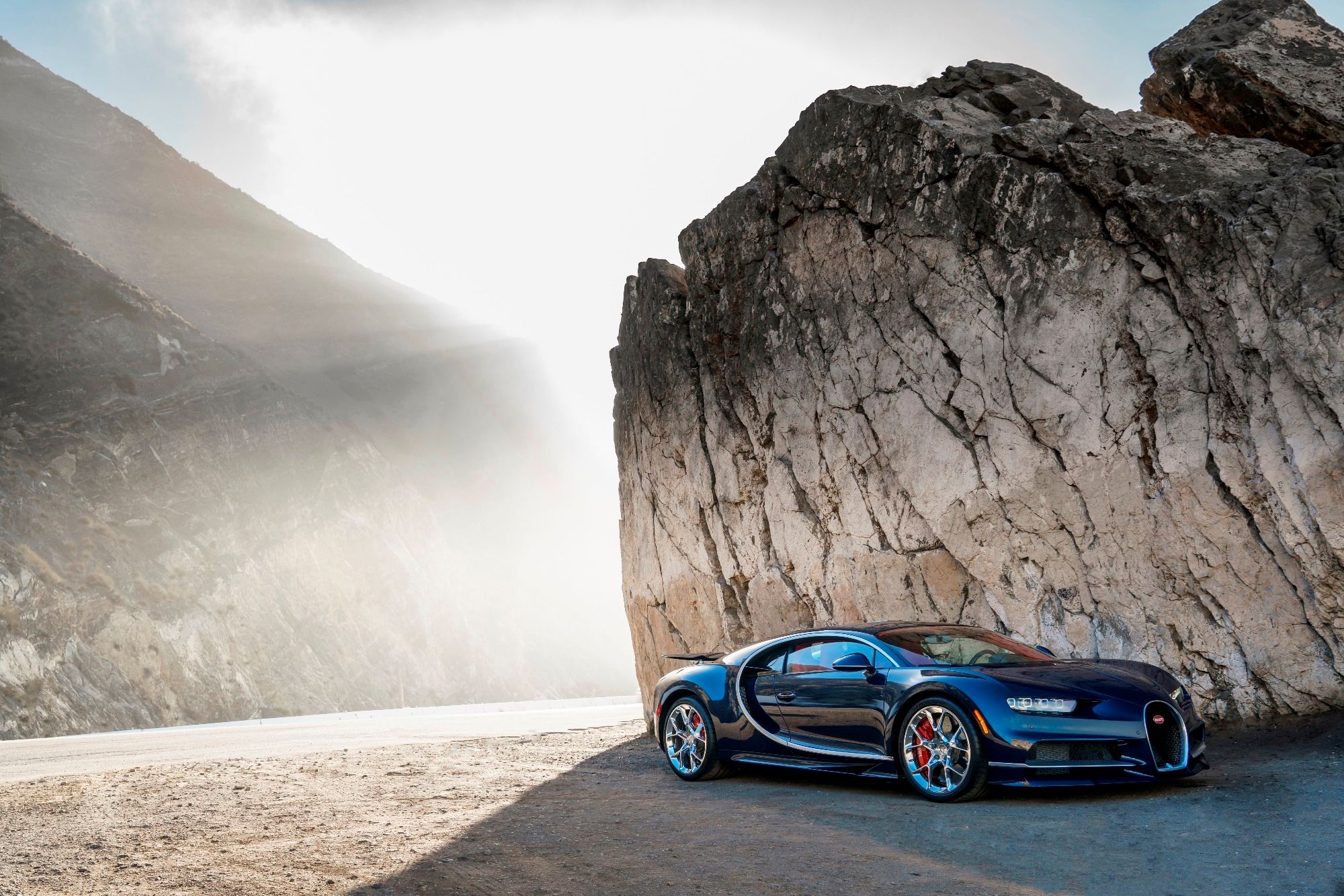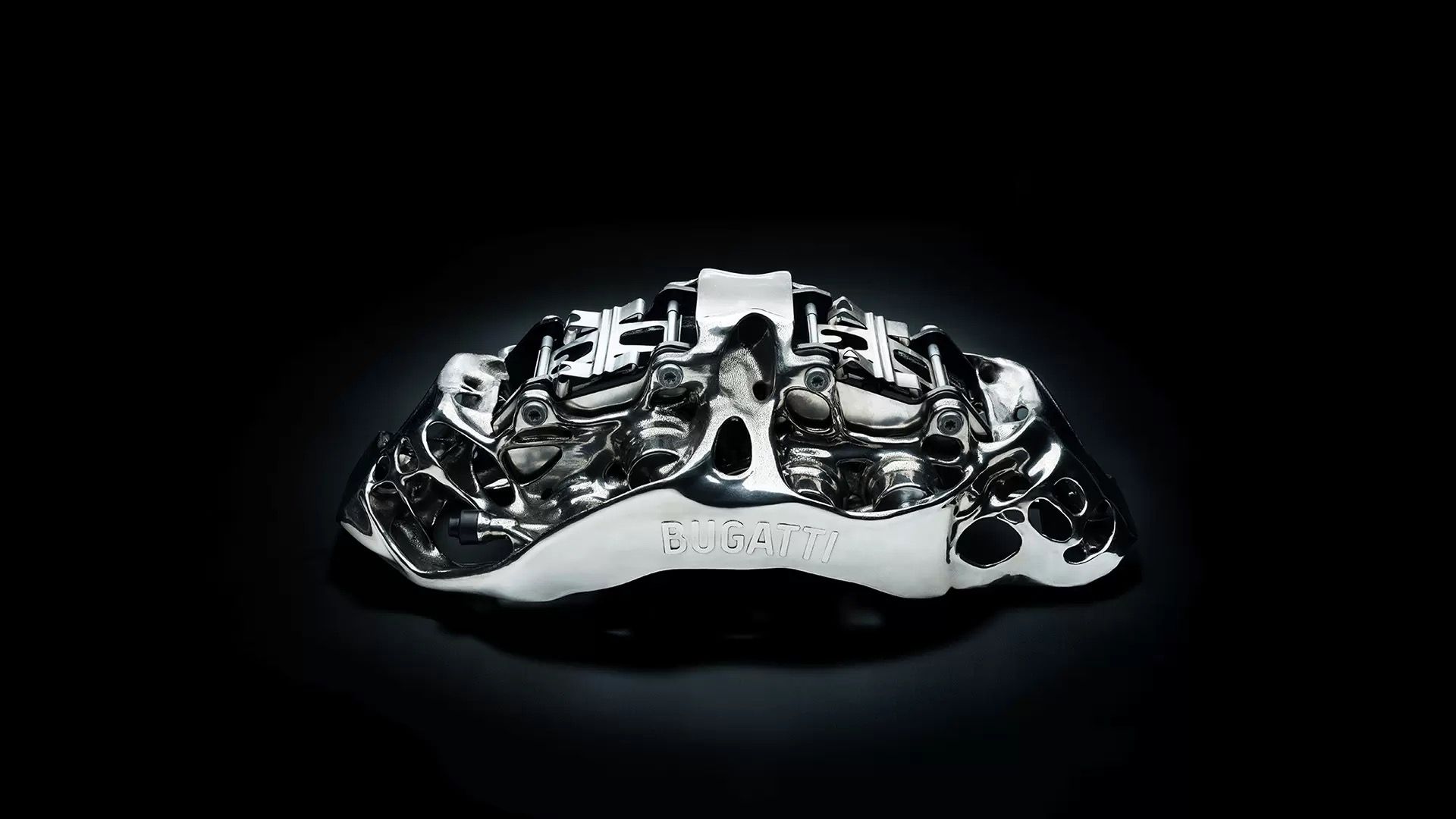
Here in the 21st century, we know Bugatti as the entity that chases speed records with its insane 16-cylinder, quad-turbocharged engine packed into an equally insanely and well-developed chassis. As a brand, though, Bugatti was formed in 1909 by Italian-born Frenchman Ettore Bugatti in Italy. Bugatti now reflects the brand's early history as Ettore Bugatti built the marque's reputation for building fast and beautiful cars, including grand touring coupes and race cars that won Grand Prix events. Ettore Bugatti died in 1947, and with nobody to pass the marque onto, it struggled financially before going bankrupt with only around 8,000 cars built. It was finally sold in 1963 for its airplane parts side of the business, but in 1987, Italian entrepreneur Romano Artioli bought the name and opened a factory in Modena that opened in 1990.
Here are the facts you need to know about the Bugatti brand.
1. Incredibly Successful Race Cars
The Bugatti Type 35 is one of the most successful race cars in automotive history. Across the eight versions produced, it won over 1,000 races, averaging 14 races per week over almost ten years. In 1924 it debuted at the Grand Prix of Lyon and later won the first ever Monaco Grand Prix. As well as Grand Prix events, the Type 35 won the Targa Florio road race five years in a row. Louis Chiron was most famous for Grand Prix wins, while Albert Divo took two of the Targa Florio victories, but many top racers chose the Type 35 to race as it was a technological masterpiece of its time. It used a 2.0-liter eight-cylinder engine and was immensely powerful. But Bugatti understood the importance of weight and developed cast aluminum wheels to lower unsprung weight and a hollow, lighter front axle.
The modern Bugatti company regularly celebrates its long history, and you can see at this point the horseshoe-shaped radiator has evolved to become a styling cue that's used on its hypercars.
2. 24 Hours of Le Mans
As well as Grand Prix wins, Bugatti has two 24 Hours of Le Mans victories under its belt. The first came in 1937 with Jean-Pierre Wimille and co-driver Robert Benoist at the wheel. More famously, Jean-Pierre Wimille and Pierre Veyron won the race in 1939 with a team that had meager resources and just one car. The car was the Bugatti Type 57C with a Bugatti 3.3-liter Supercharged straight-eight engine under the hood. The Bugatti Type 57C was designed by Jean Bugatti, Ettore Bugatti's son, who died in 1939 while testing a Type 57 race car.
Pierre Veyron's name was later immortalized with the Bugatti Veyron model, as was Louis Chiron, who raced mainly in Grand Prix events and held the most podium results in Bugatti cars.
3. First Modern Bugatti
The first car to roll out of the new factory when Bugatti was revived - by the same man who owned Lotus - was the Bugatti EB 110 GT. Power was generated by a 3.5-liter, quad-turbocharged V12 engine. The EB 110 GT featured a carbon fiber chassis courtesy of former Ferrari 288 GTO and Ferrari F40 designer Nicola Materazzi. It was a ferociously fast car and a worthy precursor to the modern hypercars, so much so that legendary Formula 1 driver Michael Schumacher bought one.
However, it was a crazy expensive car and came onto the market just in time for the recessions in its main markets, North America and Europe. The company failed and was liquidated in 1995, with Dauer Racing of Germany purchasing the license to produce the EB 110 and remaining parts. Dauer Racing built five heavily refined EB 110 SS models. Bugatti's factory was then sold to a furniture maker, then Volkswagen bought the Bugatti brand in 1998.
4. Forgotten Bugatti Sedan
Before everything went wrong for Artioli's Bugatti, it came up with a concept sedan designed by Giorgetto Giugiaro of Italdesign. The EB 112 was a retro-design full-size sedan driven by a 450 hp V12 engine and four-wheel-drive, and its carbon fiber chassis was shared with the EB 110. Bugatti built only the show car, but businessman and Monaco Racing Team owner Gildo Pallanca Pastor purchased the company's assets, including three unfinished EB 112s and all the available spare parts, when Bugatti was liquidated. Monaco Racing Team finished two of the cars and left the design study version as is. The three cars are out there, with one of them last spotted for sale in 2021.
5. Bugatti Is Now Bugatti-Rimac
It's well known that Volkswagen owned Bugatti for the Veyron and Chiron era, but now the brand has entered a new phase. Despite only being formed in 2009, Rimac now owns a majority 55 percent stake in the new company, and founder Mate Rimac has become CEO. It's a convoluted deal in which Porsche also has a stake and acts as a strategic partner, but it also means that two of the most prolific hypercar builders in their respective fields of combustion and electrification can now share tech with one another. Not much is known about future plans other than a Chiron replacement should appear in 2027 without a W16 engine and with hybridization in place. Despite Rimac's electric drivetrain prowess, Bugatti isn't done with gas engines entirely yet, and Mate has confirmed an all-new engine is being developed.
6. Innovative Tech: From Aluminum Wheels To 3D Printed Brake Calipers
The Bugatti brand has always been ahead of the times in technological development, pioneering the aluminum alloy wheel as far back as 1920.
Fast forward nearly a century and Bugatti made the largest production brake calipers in automotive history. Not only are they big, made from titanium, and are monobloc design, but they're 3D printed. It's an incredible feat of engineering that uses aerospace-grade titanium used for the most stressed parts of an airplane. When finished, the front caliper has eight titanium pistons to grab the discs with while the rear caliper has six pistons. Not only is the next-generation caliper stronger than the aluminum originals, but they're also 40% lighter. It takes 45 hours to print a brake caliper on Laser Zentrum Nord's giant printer that uses four 400-watt lasers.
7. That W16 Engine
Bugatti's Veyron and Chiron are masterpieces of design and engineering, but the 8.0-liter quad-turbocharged W16 engine that powers the models is the most stunning part of the cars. It's the only production W16 engine in the world and is made up of four rows of four cylinders. It uses ten radiators that take 15 hours each to build by hand. At full throttle, the engine will suck the fuel tank dry in around 12 minutes. That means it needs fuel pumps that can pump fuel eight times faster than a normal car while the intake system sucks in around 60,000 liters of air. The last car to use the engine is the Bugatti W16 Mistral. It makes 1,578 hp, and only 99 will be built, signaling the end of the already legendary engine.

